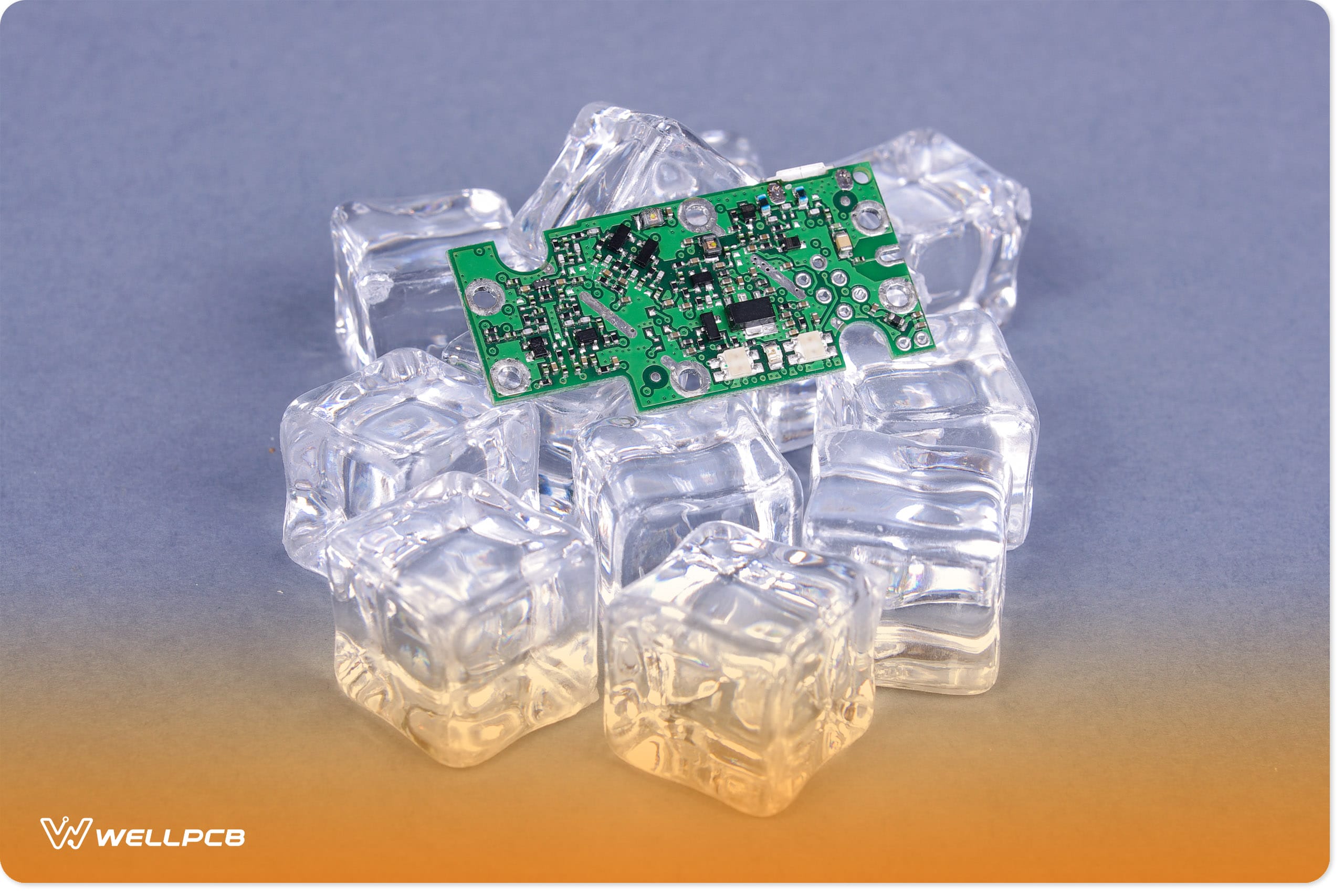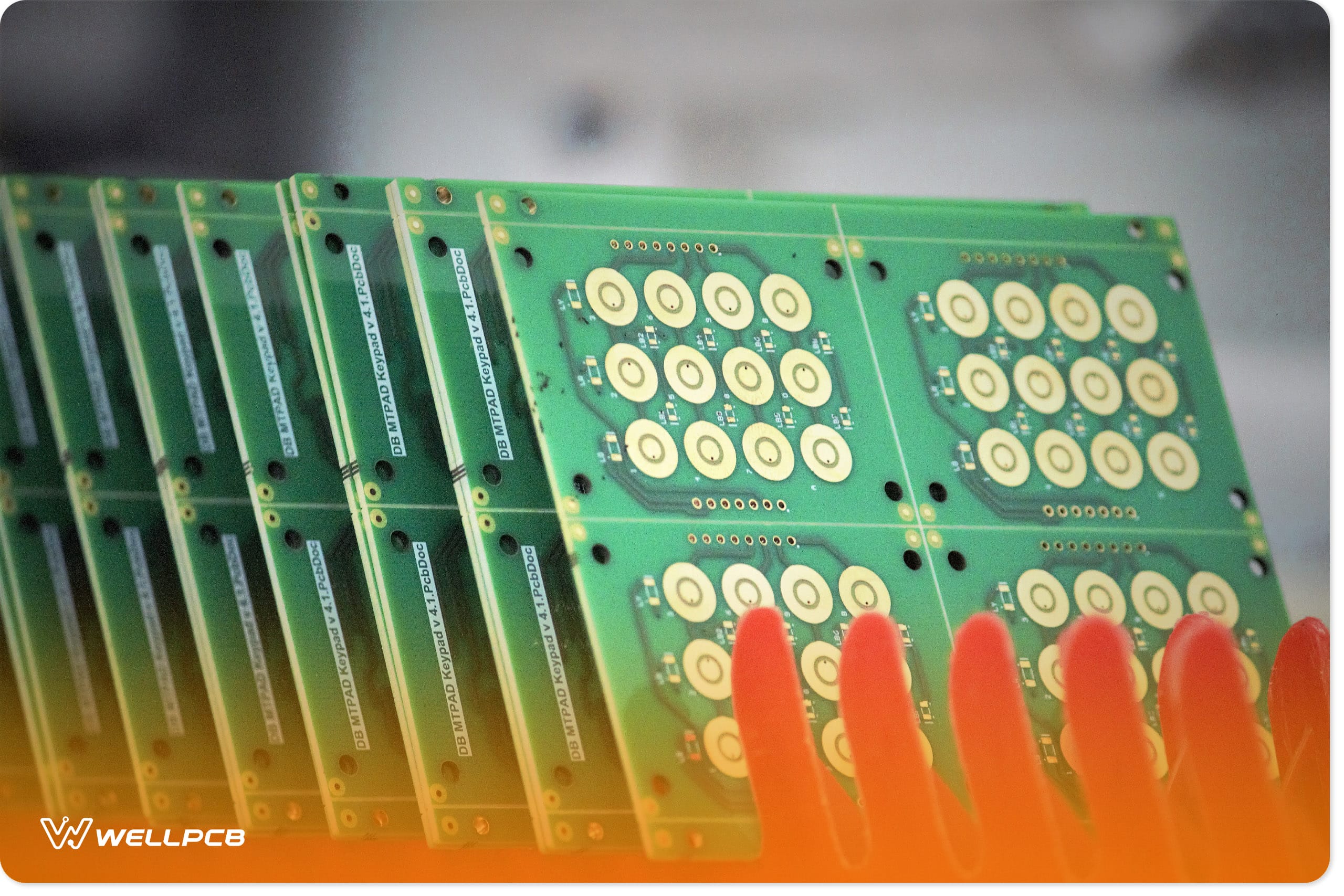Contents
- 1 What is Polyimide PCB?
- 2 Polyimide PCB Types
- 3 Characteristics of the Polyimide PCB
- 4 Applications
- 5 Polyimide VS FR4 Materials
- 6 Different Kinds Of Polyimide PCB Materials
- 7 Polyimide PCB Thickness?
- 8 The Disadvantages Of Polyimide
- 9 What Is The Difference Between Polyamide And Polyimide PCB?
- 10 Final Words
What is Polyimide PCB?
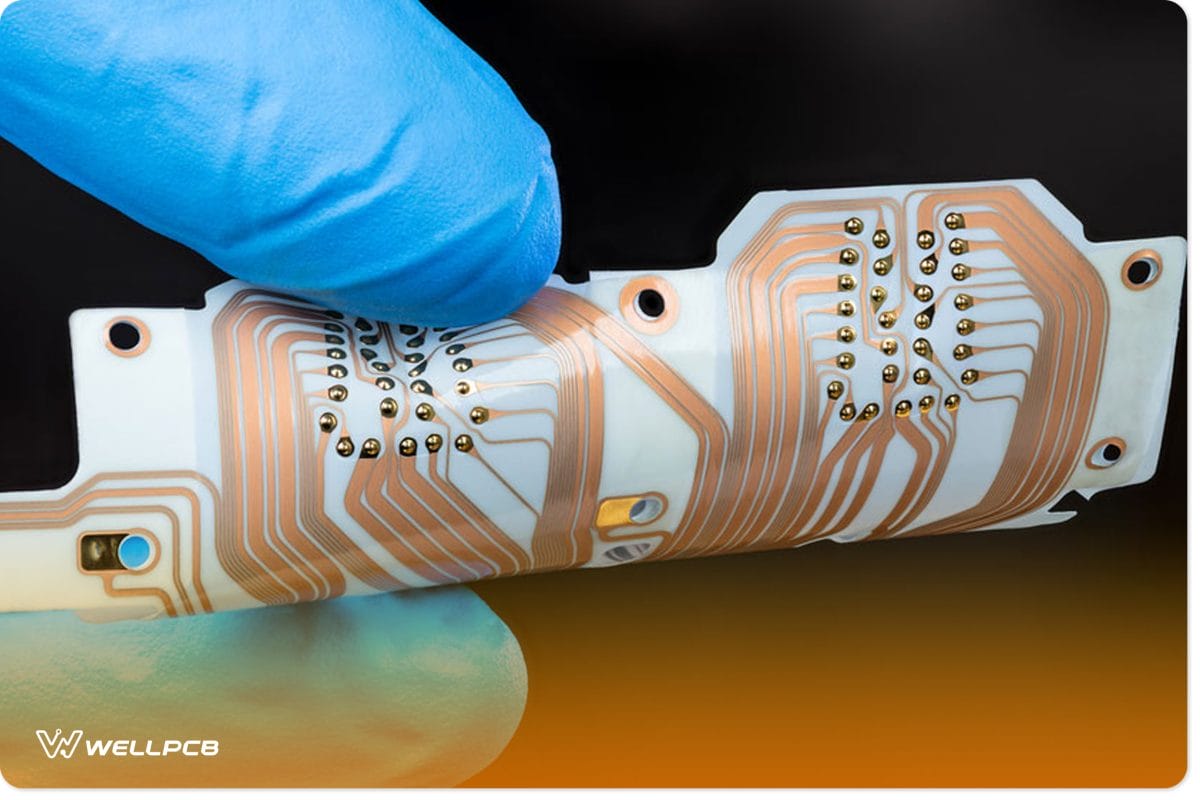
Polyamides or polyimides are polymers that consist of imide monomers. This category includes both synthetic and natural materials; for example, natural polyamides include wool and silk.
However, in PCB production, manufacturers rely on synthetically mass-produced polyimides as the base material for board construction.
How are synthetic polyimides produced? In essence, this is done by polymerizing elements with imide structures. The process often involves chemicals such as maleic anhydride and bismaleimides.
Furthermore, the specific additives and chemicals used in polymerization will determine the type of polyimide created, which can impact the performance of flexible PCB applications, especially in high-temperature environments.
Polyimide PCB Types
So, here are the different polyimide PCB types:
2nd Generation Polyimide or Pure Polyimide
This PCB doesn’t have extra features like brominated flame retardants—which is good. Again, that’s because a lack of flame retardants translates to extreme stability and flexibility.
So, you can use the pure polyimide or polyimide flex PCB for communicating and electrical devices.
No doubt, this polyimide PCB type is one of the oldest, but it has widespread use due to its thermal stability and extreme endurance against temperature.
3rd Generation Polyimide

printed circuit board
In truth, the 3rd generation polyimide is an upgraded version of pure polyimides. Plus, it features extra additives that make it flame-resistant. Also, this polyimide’s flammability resistance helps stop an accidental electric fire.
But this feature comes at a price because the 3rd generation polyimide isn’t thermally stable like the pure polyamides. Further, this polyimide is pretty easy to produce. Consequently, you can build this PCB in bulk faster than another polyimide flexible PCB.
Filled Polyimide
You can classify the filler polyimide as multilayer PCBs. How? Because it consists of different filler materials, which helps prevent resin shrinkage. Also, the filled polyimide system comprises a filler and polyimide.
Further, resin shrinkage affects a board’s longevity. It makes circuit boards vulnerable to cracks and frail during the curing or drilling. So, additional fillers help to boost a circuit board’s durability and strength.
Low-Flow Polyimides
The low-flow polyimides are the opposite of pure polyimides in terms of flexibility. You can also call them the rigid PCB. Plus, this feature is beneficial—especially if your application requires a rigid PCB that withstands adverse conditions.
Characteristics of the Polyimide PCB
You can get the best out of a polyimide PCB. But it’s crucial to understand the features first. Here they are:
Resistant to Chemicals
Polyimide PCB has chemical stability. In other words, exposing the polyimide to different corrosive chemicals won’t get adverse effects.
Thermal Stability
When there’s a wide range of temperatures, polyimides have extreme stability. The PCB also supports standard hostile inhospitable temperatures (close to 260 degrees Celsius).
Also, polyimide PCBs have excellent thermal conductivity, resisting thermal damage during production or repair processes.
Remarkable Flexibility
Polyimide material has exceptional flexibility. Hence, you can use the material for manufacturing flexible and rigid-flex PCBs.
High Durability
Aside from the polyimide PCB’s resistance to chemicals and heat, they are resistant to physical stress. The PCBs maintain their shape irrespective of the thermal and physical factors that affect them. Hence, they are perfect for field repairs and harsh environments applications.
Outstanding Tensile Strength
Tensile strength is when a material can support a maximum load without cracking when you stretch it, divided by the material’s original cross-sectional area.
So, even though the polyimide PCB is quite flexible, the material is solid and resilient to warping (twisted out of shape). Hence, polyimide PCBs are ideal for applications that need physical durability.
Applications
The most common applications of polyimide PCB include:
Automotive Electronics
Indeed, electric components in automotive industries usually face many challenging conditions. Plus, they must function regardless of extreme weather conditions (summer and cold) with continuous pushing of multiple components.
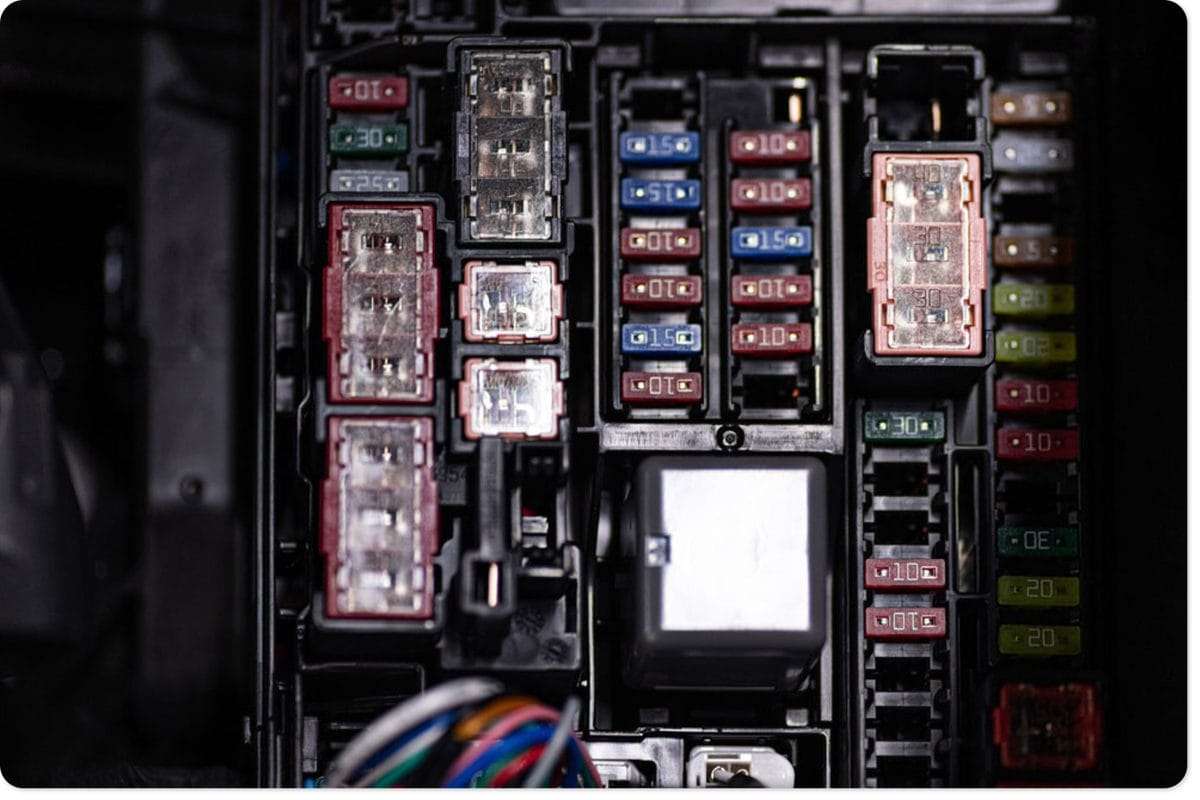
Car Fuse box with polyimide PCB
That said, automotive components naturally need a durable PCB, and the polyimide is up to the task.
Medical Industry
You need a high-efficiency application before performing certain operations in the medical industry, like prosthetics, advanced imaging, implants, etc. In truth, you can get this high-performing efficiency with polyimide PCBs.
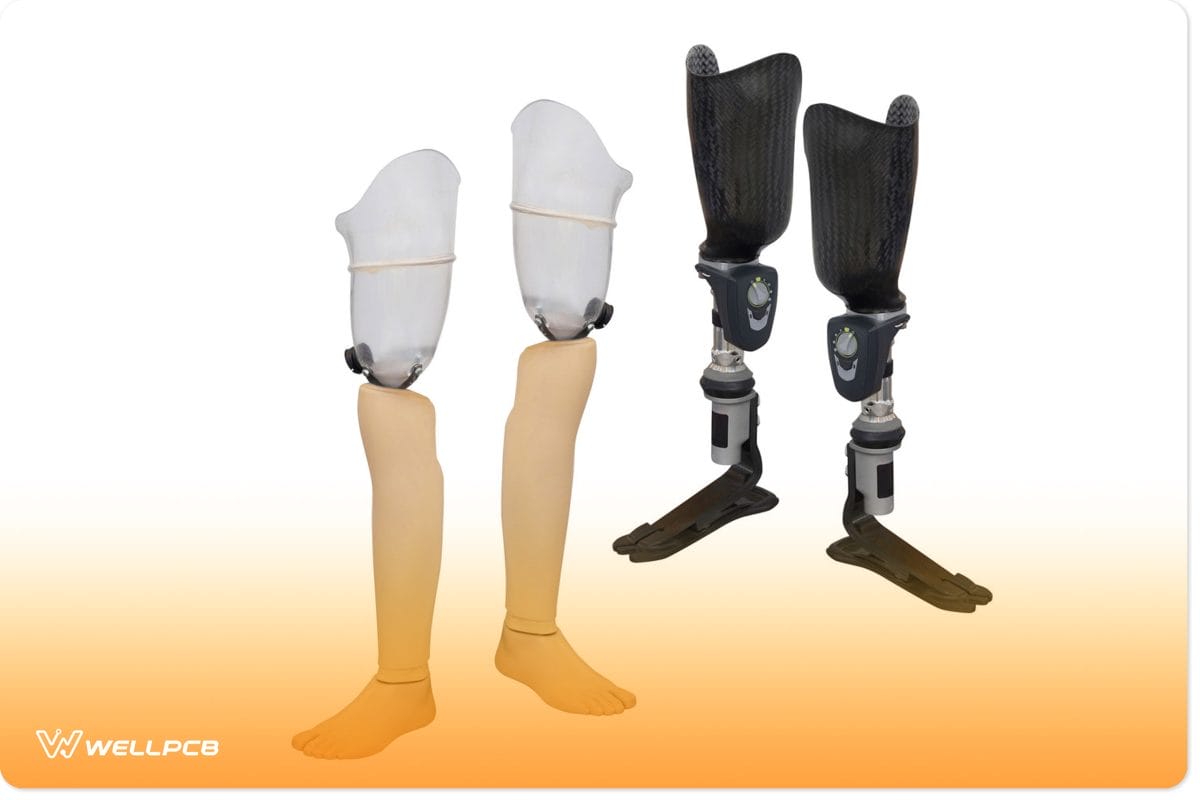
Prosthetic limbs using Polyimide PCB
Computer and Laptops
Indeed, flexibility and durability are the two significant factors that computers and laptops need to resist the physical stress of daily use. Also, the computer PCBs may become hot while operating.

Polyimide PCB in Laptop
Hence, due to their thermal stability, flexibility, and durability, it would be best if you used a polyimide and rigid-flex PCB in the PCBs’ environment.
Polyimide VS FR4 Materials
Here is a table that compares polyimide materials vs. FR4 materials


Different Kinds Of Polyimide PCB Materials
Polyimide materials serve as PCB substrate bases. Usually, you’ll find five common materials, each suited for specific apps.
One of the most popular polyimide PCB materials in Kapton PCB.
What is Kapton PCB material?
DuPont developed Kapton PCB to cater to applications that needed a flexible polyimide that remained stable under stressful conditions such as high heat.
Kapton is highly conductive. Since it controls heat so well, you’ll find it in electrical devices with thin and lightweight heaters.
Kapton is not only popular for its thin and lightweight properties. It features heavily in extreme temperature applications that need a range between 452 to 752 degrees Fahrenheit. That means you can find it in aerospace applications, too.
Furthermore, Kapton is a flame retardant. It’ll retain its form even when you subject it to +750F temperatures.
That’s not all. Check out these other properties that make it preferable as a PCB base layer.
- It is colorless and transparent, making it perfect for design.
- It’s not only a PCB substrate. It also has properties that make it a magnet wire insulator.
- You can choose any thickness between 7 and 125 microns for your application.
- It’s an excellent resistor.
UPILEX Polyimides
What do you get when you combine biphenyl tetracarboxylic dianhydride (BPDA) monomers and a diamine and put them under polycondensation? You’ll get the dielectric, heat-resistant polyimide film Upilex.
Upilex comes in several grades, each with a special use.
- Upilex-S(mechanical properties)
- Upilex-RN(molding capabilities)
- Upilex-VT(heat bonding)
You will find that PCB manufacturers favor Upilex when they want dimensional stability with high heat and chemical resistance. Also, they prefer it for its minimal water absorption and chemical-resisting properties.
Apical Polyimides
Kaneka High-Tech materials developed Apical Polyimides and packed a wide array of desirable qualities. It developed different Apical grades: AV, AP, AX, NP, and HP.
Like Kapton, it is lightweight. Also, it has more properties, making it a top PCB for high-tech uses. Let’s explore them.
It maintains mechanical and electrical integrity even when subjected to temperatures between -269°C and 400°C. What’s more? It has high abrasion and cut-through resistance and retains thermal dimensional stability at 752ºF.
That’s not all. Its high chemical resistance makes it valuable in solvents, acids, and lubricant applications.
Unlike Upilex which is still being tested for radiation resistance, Apical already has proven radiation resistance.
PI-2611 Polyimide
Unlike the choices above, PI-2611 is one of the PI-2600 series polyimides.
Their standout characteristic is that they are non-photosensitive. Also, they are great for high-temperature applications. They operate between 200-350℃.
Their low CTE value helps to maintain structural integrity in high-stress applications.
Other high-heat-resistant polyimides surpassing the 350℃ threshold include Evonik’s P84 and Guangzhou Kingboard’s EX 1514 and 1515.
Polyimide PCB Thickness?
Polyimide PCB thickness ranges between 0.1 and 0.5mm. This range lets you maintain flexibility, insulation, and conductivity without bulking up your final board.
However, you can ask your Polyimide PCB manufacturer for a custom thickness that fits your needs.
Some professionals advise you to keep the thickness between 0.008 and 0.24 inches for the entire PCB board. Still, you must know that a thicker board or thicker polyimide PCB layers increases the manufacturing price and directly affects efficiency.
The Disadvantages Of Polyimide
- As you can see above, one of the main disadvantages of polyimide is its limited thickness. Since it’s primarily made to be flexible, a small thickness range might limit the application capabilities.
- Again, due to their limited thickness, polyimide repair is extremely challenging. This disadvantage also applies to redesigning, reworking, or modifying the polyimide. In the same breath, polyimide PCB fabrication is a tough task if you don’t have qualified manufacturers.
- For a material that is affected by heat, polyimide PCBs are also susceptible to anisotropic expansion. That is the ability of a material to expand in all directions when you subject it to heat. This characteristic makes it hard to design. Your manufacturer must consider the possibility of expansion.
- Speaking of manufacturers, polyimide PCB’s delicate design and manufacturing process is complex. That means there may be a shortage of qualified and professional manufacturers for the task.
- Finally, the fabrication process might take longer than FR-4. Therefore, costs may be higher, too.
What Is The Difference Between Polyamide And Polyimide PCB?
| Polyamide PCB | PCB Polyimide |
| Formed through polymerization. | Formed through condensation polymerization. |
| It has two main components: diamine and a dicarboxylic acid. | Its two main components are dianhydride and a diamine. |
| You can observe a -CO-NH linkage in the chain structure | You’ll see a -CONH- imide linkage in the chain structure. |
| Mostly exist as synthetic polymers and thread form. | Exist as synthetic resins. |
| It has lower thermal stability yet still retains good thermal resistance. | It has a superior thermal stability. |
| Suitable for applications that need moderate heat resistance. | Better for applications that need high heat resistance. |
| Lower mechanical strength. | Higher mechanical strength, suitable for high loadweight and high-pressure applications. |
| Polyimides perform better as electrical insulator. |
These differences between polyamides and polyimides influence their usage. You will have better results using polyamide in textiles such as sportswear. Polyimides exhibit all the top qualities you need in material for semiconductors, electronics, and automotive applications.
Final Words
Polyimide PCBs are suitable for a wide variety of applications. In truth, it’s all thanks to its properties. Also, the FR4 material poses a good option as well. But you must determine the best option that fits your board applications perfectly.
So, do you need help knowing if polyimide boards are ideal for your projects? Or do you want to get the best PCBs? Please feel free to reach us.



